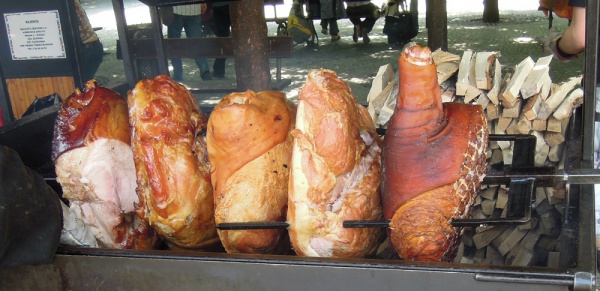Facts About Prague ham
Prague Ham is a delectable, boneless delicacy originating from Prague in Bohemia. It is brine-cured, stewed, and gently smoked using beechwood, which imparts a unique and delightful flavor. When this ham is cooked on the bone, it is called "šunka od kosti" and is regarded as a true delicacy.
The history of Prague Ham dates back to the 1860s when a pork butcher named Antonín Chmel, who worked in Prague's Zvonařka area near Nuselské schody, first introduced it to the market. Its popularity rose swiftly, and by the 1920s and 1930s, Prague Ham had become a sought-after export. This led to other countries attempting to replicate the recipe. Today, the Czech Republic takes great pride in this culinary treasure, often referring to it as their "family silver." European law now protects its regional branding, meaning that if it is produced elsewhere, it must be labeled as "Prague style" Ham.
Prague Ham is commonly found in restaurants and sold by street vendors. It is typically served with boiled potatoes and paired with a refreshing Czech beer. Street vendors usually sell it by weight in grams, which can sometimes confuse tourists who are not familiar with the metric system. This can result in larger portions and higher prices than expected.
In other languages, Prague Ham is known by different names: "Prager Schinken" in German, "Prosciutto di Praga" in Italian (which refers to a similar dry-cured pressed ham), "Șuncă de Praga" in Romanian, and "Praška šunka" in Serbo-Croatian.

 Slovakia
Slovakia